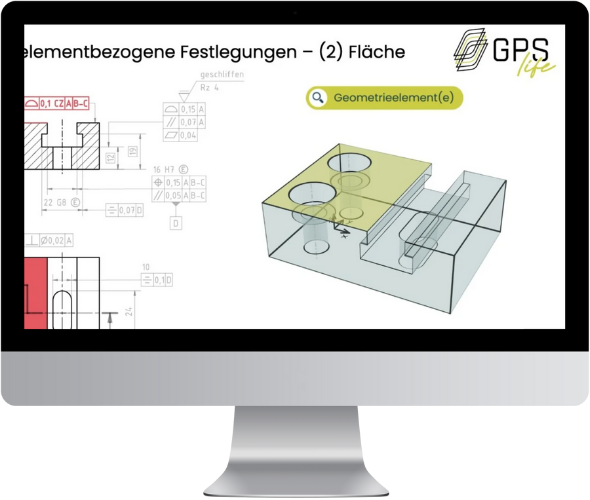Mit einer systematischen Vorgehensweise, die beim Lesen und Interpretieren von technischen Zeichnungen unterstützt, wird das Verstehen der Inhalte und die Identifikation kritischer Toleranzen beispielsweise für die Arbeitsvorbereitung oder Messtechnik sehr erleichtert. Zudem kann die Spezifikation auf mögliche Mehrdeutigkeiten, Fehler oder fehlende Angaben geprüft werden. Auch für uns war das seit langer Zeit eine herausfordernde Aufgabe, alle Eintragungen zu lesen, sodass wir Vorgehensweisen dafür entwickelt haben, dass wir damit effizienter werden.
Nachfolgend ist auszugsweise diese systematische Vorgehensweise vorgestellt. Für komplexere und unübersichtlicher dargestellte Bauteile gibt es auch noch einen alternativen Vorschlag, der abschließend kurz beschrieben ist.
Systematische Vorgehensweise
Nachfolgende Schritte geben einen Überblick, wie wir uns bei Einzelteilen systematisch durcharbeiten, um alle Angaben einzubeziehen:
1. read out the title block, in particular to be able to take into account the drawing date for the assignment of standards and general specifications (e.g. general tolerances or general edge specifications).
2. Datum system and identify references, understand the protection of references
3. form, direction, location and running tolerances assess, assign TEDs to the location tolerances
4. size dimensions and changes to the default settings, e.g. with the envelope condition.
5. surface data determine which parameters are entered for which geometry elements
6. further specifications Understand

This approach also forms the basis for the content integrated in our new course on the interpretation of technical drawings. You will also find exercises there.
Procedure for more complex components
Alternatively, specifications can also be interpreted in relation to the geometry element. This approach follows the basic idea of the ISO GPS system from ISO 8015 that components are broken down into individual geometric elements. The following image shows a section of what this looks like. The specification for each individual geometry element is thus analysed even more systematically.

This procedure is also presented as "Procedure for reading extensive drawings" in the application module of the above-mentioned course using an example.